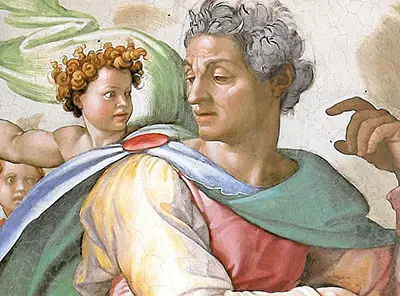Each of these portraits were around four metres in width and height, and the consistent sizing was due to how Michelangelo had to work within the structure of the building. This made some of his artworks harder to implement, such as when working in the corners. We do know that Michelangelo's Prophet Isaiah portrait would even later inspire Caravaggio, a major artist who followed on shortly afterwards. The Sistine Chapel itself remains one of the true artistic wonders of the world, and its preservation is critical to protecting art from the Renaissance era. Whilst most tourists will tend to focus only on the most famous elements of Michelangelo's work in the Chapel, such as The Creation of Adam and The Last Judgement, there are still plenty of others who will delve deeper into the display in order to learn more about the supporting features. The artist required the help of a number of assistants in order to put such a complex and demanding array of work together.
It is the brightness of colour which makes this series of paintings so memorable. Within this portrait, for example, the carefully crafted clothing is delivered in tones of green, yellow and red which are perhaps unusually vibrant for this period of art history. The prophet is shown looking over his shoulder as two young children play behind him. These colours were lost for a period of time due to the natural wear and tear that occurs over a period of hundreds of years but the piece has now been carefully restored relatively recently, allowing us to enjoy it in all its glory once again. A blue book features within this painting and that may refer directly to the biblical Book of Isaiah, though this is another of the question marks which remain from Michelangelo's work within this chapel. It is hard to find any artist who has been researched and discussed in as much detail as this great master.
Raphael would famously produce his own depiction of this prophet, though the general concensus is that Michelangelo's version was more fluid and lifelike. He was a true master of anatomy, and was able to create lifelike human forms in sculpture and painting. These talents would help him to become the foremost figure of his period, taking on a huge share of the best available projects within Italy as major figures and institutions across the country continually fought to gain his services for their own respective projects. It is testament to this impact that we still celebrate his career today, many centuries later, though he is often discussed in conjunction with two other major names from the Italian Renaissance, namely Da Vinci and Raphael. Those with the time to do so can then look into other artists who appear in the supporting cast, if you like, and who also have much to offer us all.


